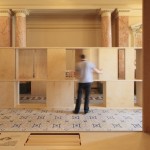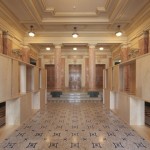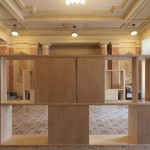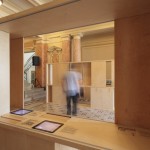An exhibition about the reactivation of the Romanian architectural heritage.
This exhibition is based on a selection of 20 contemporary interventions to listed buildings. We have not chosen restorations of huge value monuments (where the interventions should be invisible anyway), but operations that breathed new life into old, fragile sites. Respectful repairs, but also infusions of new functions, strategies, community actions, added value for that particular location.
Beyond the beautiful image, each of these projects has its own story : obviously, the story of the respective location, but also the one about a regeneration process. The restorations in case sometimes take dozens years and involve minimum funds and continuous volunteer work (like in the case of Mincu House – OAR headquarters); other time they involved very popular interior design projects which are however based on a certain perspective on history; art centers, museums, houses, auditoriums…; invisible interventions or, on the contrary, bearing the clear mark of a contemporary insertion. So, we knew from the start that we would have to present not only very different works, but also layers of the same work.
Moreover, the exhibition was to be organized not in a regular hall, but in the lobby of the Assembly Hall of Carol I University Central Library of Bucharest: a place full of decorations, strong colors, many materials, different textures. We kept asking ourselves how we could organize an exhibition there which should focus on so many different projects about so many different places. In fact, the question was how we could put something together that would coexist in peaceful harmony with the lobby of the Great Assembly Hall.
The space was insufficient for the lobby itself, so any attempt to add more images and words about anything else seemed to be flashy. In the end we chose to come up with an exhibition with invisible images. Or rather images that could not be seen from the start. Hidden images. We thought about letting people discover them. And most importantly we thought about letting visitors play with the space of the exhibition.
Instead of printed panels we chose mobile windows. Each visitor can change the position of the windows so that every time another space and detail will be depicted from the interior of the lobby. And as there are two rows of mobile panels on each wall, the game gains more substance.
The exhibition sneaks upon the visitor in the middle of this game. The screens display former images of the houses, images of the construction site or of projects by the same authors. Some of the photos associated with these projects, usually those that show the final result are printed. They can be taken out of the box and looked at as closely as you want. We wanted to bring forth some of the rich tactile experience connected to most of the exhibited projects. And we brought the act of looking through old stuff closer to everybody.
Photo: Andrei Mărgulescu






